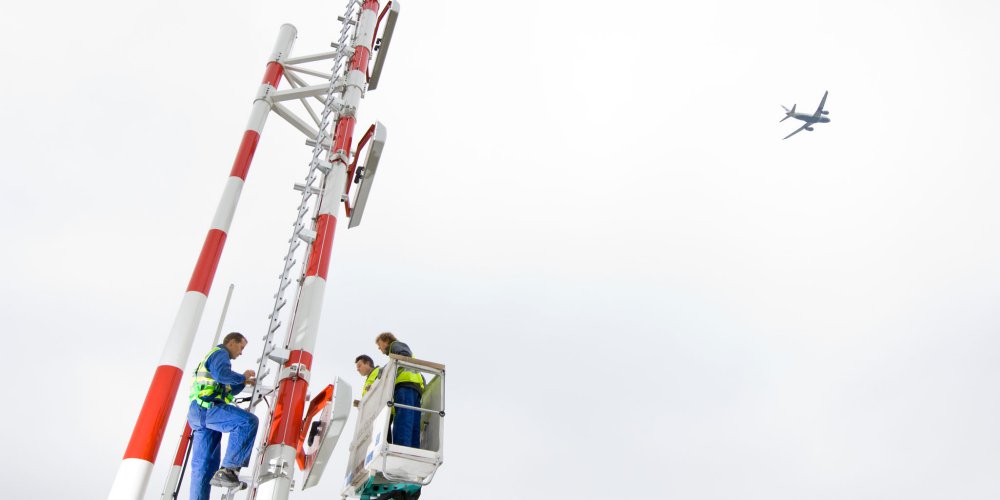has partnered with Skyguide, the Swiss air navigation service provider, to develop and deploy a national drone traffic management system (UTM—unmanned aircraft systems traffic management) for Switzerland. The announcement followed AirMap’s 2017 U-space demonstration with Skyguide.
Switzerland already hosts the world’s first autonomous drone delivery network, in Zurich, and since 2013, drone flight requests to Skyguide have increased ten-fold. The AirMap UTM reaches 85 percent of the world’s drones and offers up-to-date airspace information for every country and national airspace rules for more than 20 countries. Investors in the U.S.-based company include Airbus Ventures (Innovation Zone 3394), China’s Baidu Capital, M 12, Qualcomm Ventures, and the Japanese e-commerce company Rakuten.
The partnership with Skyguide is part of a broader strategy to leverage data from successful foreign UTM projects to expedite FAA approval of UTM in the U.S., said Gregory McNeal, co-founder of AirMap. McNeal is a professor of law and public policy at Pepperdine University and has served on the FAA’s Micro UAS Aviation Rulemaking Committee, the UAS Registration Task Force, the Secret Service Electronic Crimes Task Force, and the Remote Identification and Tracking Aviation Rulemaking Committee. McNeal said he hoped success abroad would convince FAA regulators of the efficacy of UTM. “We’ve been going around the world, where we can demonstrate this, and then going back to the FAA and saying, ‘Look how much faster it is happening in other places.'”
“Industry must show governments how advanced operations can be conducted safely,” McNeal said.”If governments across the world don’t change their models the unmanned aircraft industry won’t take off more than it has, which is to say line of sight, [FAA] Part 107 operations, a remote-control aircraft within line of sight, or an autonomous remote control aircraft within line of sight.” He said the partnership with Skyguide enables AirMap to put in place in Switzerland by 2019 everything that would be required for a U.S. UTM system by 2021. “We’re going to take that information back to the United States,” he said. He also added that the UTM developed for Switzerland would translate well throughout Europe and into other markets. “Swiss U-space is really going to take off in 2018. Skyguide has such a good relationship with FOCA [the Swiss federal office of civil aviation], waivers that you process in Switzerland can become a template for a waiver that can be accepted by other agencies in Europe or the United States.”
BEYOND EUROPE
AirMap is also partnering with Airways New Zealand, the ATC provider in New Zealand. Areas that were previously closed [to UAS] are now open to more advanced operations. In Japan, AirMap has partnered with Rakuten to develop unmanned aerial package delivery capability. “Japan’s prime minister has set the goal of drone package delivery in rural areas in 2019 and by the 2020 Olympics in Tokyo,” McNeal said. “We’re executing with Rakuten to do that. Japan has a series of densely inhabited districts and those districts have the authority to make drone rules. By delegating that they have moved very quickly.”
In the U.S., AirMap has partnered with the state of Kansas to deploy a UTM solution. “This is our laboratory to test different models,” McNeal said. “If you have a business and want to do something more advanced there, we have the blessing of the state government and all of their resources to go collaboratively to the FAA and say: ‘Here’s the advanced operation we want to do, here’s what our waiver looks like, the state has signed off, here’s our technology mitigation with AirMap, we have radar feeds the state has helped provide for us, we have local economic development authority.’ They want us there, the public accepts it, in that waiver goes, and we start to figure out how to do more advanced operations.”
McNeal said to be useful, UTM must be intuitive and adapt to changing conditions. He uses the example of airspace around an airport as an example. Rather than putting the entire airport operations area and surrounding boundaries and altitudes off limits, the intuitive UTM would automatically process runways and approaches in use, structures, and obstacles, and divide the adjacent airspace into grids in real time. “Then all of a sudden a big controlled circle marked ‘no’ becomes a series of automated ‘yeses’ or ‘yes-so-long-as,’ and that is the first step to UTM. And instead of just doing that for airports, we can do that for many other locations.” McNeal said the key was getting the right data to turn “no-fly zones” into “yeses or yes-so-long-as,” and the best source of that data is not always the FAA, in many cases it is state and local governments. This is particularly true for dynamic situations such as structure fires, he said.
The enabling technology begins with the drone, McNeal said. “Registration and identification is key. We want the authorization to automatically go from the drone to the airport ATC tower, and then the geofence unlocks once you have the approval. The drone is squawking, talking, and understanding what is coming back to it and getting the authorizations.”
Source: AIN Online

